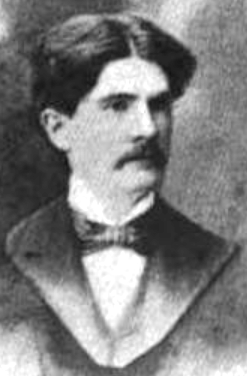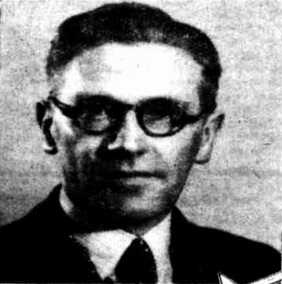The year 1973 in architecture involved some significant architectural events and new buildings.

Gillespie, Kidd & Coia was a Scottish architectural firm famous for their application of modernism in churches and universities, as well as at St Peter's Seminary in Cardross. Though founded in 1927, they are best known for their work in the post-war period. The firm was wound up in 1987.

Guy Lowell, was an American architect and landscape architect.
Vancouver Public Library (VPL) is the public library system for the city of Vancouver, British Columbia. In 2013, VPL had more than 6.9 million visits with patrons borrowing nearly 9.5 million items including: books, ebooks, CDs, DVDs, video games, newspapers and magazines. Across 22 locations and online, VPL serves nearly 428,000 active members and is the third-largest public library system in Canada.

Vancouver City Hall is home to Vancouver City Council in Vancouver, British Columbia, Canada. Located at 453 West 12th Avenue, the building was ordered by the Vancouver Civic Building Committee, designed by architect Fred Townley and Matheson, and built by Carter, Halls, Aldinger and Company. The building has a 12-storey tower with a clock on the top.

Sir John Sulman was an Australian architect. Born in Greenwich, England, he emigrated to Sydney in 1885. From 1921 to 1924 he was chairman of the Federal Capital Advisory Committee and influenced the development of Canberra.

Dennis Sharp was a British architect, professor, curator, historian, author and editor. His obituary in The Guardian stated that he 'was well-known as an architectural historian, teacher and active defender of the environment. However, his reputation in those fields rather overshadowed his considerable success as a working architect and his long-term commitment to environmentally friendly building'.

The Museum of Vancouver (MOV) is a civic history museum located in Vanier Park, Vancouver, British Columbia. The MOV is the largest civic museum in Canada and the oldest museum in Vancouver. The museum was founded in 1894 and went through a number of iterations before being rebranded as the Museum of Vancouver in 2009. It creates Vancouver-focused exhibitions and programs that encourage conversations about what was, is, and can be Vancouver. It shares an entrance and foyer with the H. R. MacMillan Space Centre but the MOV is much larger and occupies the vast majority of the space in the building complex where both organisations sit as well as separate collections storage facilities in another building.

Bradshaw Gass & Hope is an English architectural practice founded in 1862 by Jonas James Bradshaw. It is Bolton's oldest architectural practice and has exhibited archive drawings in London and Manchester. The style "Bradshaw Gass & Hope" was adopted after Bradshaw’s death to incorporate the names of the remaining partners, John Bradshaw Gass and Arthur John Hope. As of 2022, the firm continues to operate from offices in Bolton.
William Halsey Wood was an American architect.

Parr and Fee was an architectural partnership in Vancouver, Canada that functioned from 1899 to 1912.

Victor Andre Matteson was an American architect. His practice was based in Chicago and LaSalle, Illinois.

The architecture of Vancouver and the Greater Vancouver area consists of a variety of modern architectural styles, such as the 20th-century Edwardian style and the 21st-century modernist style. Initially, the city architects embraced styles and ideas developed in Europe and the United States, with only limited local variation.
George Moreby Acklom, was a British writer, editor, literary adviser and critic based in New York City, principally with the publisher E.P. Dutton, and the father of the Hollywood actor David Manners.
Lillian Irene Hoffar Reid was a Canadian painter. She was in the first graduating class, June 1929, at the Vancouver School of Decorative and Applied Art. She taught at the Vancouver School of Art from 1933 to 1937.

Captain Thomas Oloff de Wet CBE was a Senior British Officer in the Royal Navy. He was Principal Naval Transport Officer during the evacuation of Constantinople in 1923, Principal Sea Transport Officer in North China in 1927 and Officer in Charge of Sea Transport in Egypt between 1924 and 1926 and again between 1928 and 1933.

Granville Town Hall is a heritage-listed former town hall at 10 Carlton Street, Granville, Cumberland Council, Sydney, New South Wales, Australia. It was designed by C. A. Harding and J. W. Hill (auditorium). The council chambers were built in 1888 by Banks and Whitehurst, with the auditorium added in 1900, to serve as the seat of the Municipality of Granville. The property is now owned by Cumberland Council since 2016, having been owned by the City of Parramatta since 1949. It was added to the New South Wales State Heritage Register on 5 December 2003.

George Newton Kenworthy FRAIA, also known as G. N. Kenworthy or "Kennie", was a leading Sydney architect and Fellow of the Royal Australian Institute of Architects best associated for his work in partnership with Henry Eli White and for his building designs in the Art Deco, Streamline Moderne, Functionalist and Spanish Mission styles.

The Fort Morgan City Hall, at 110 Main St. in Fort Morgan, Colorado, was built in 1908. It was listed on the National Register of Historic Places in 1995.
















